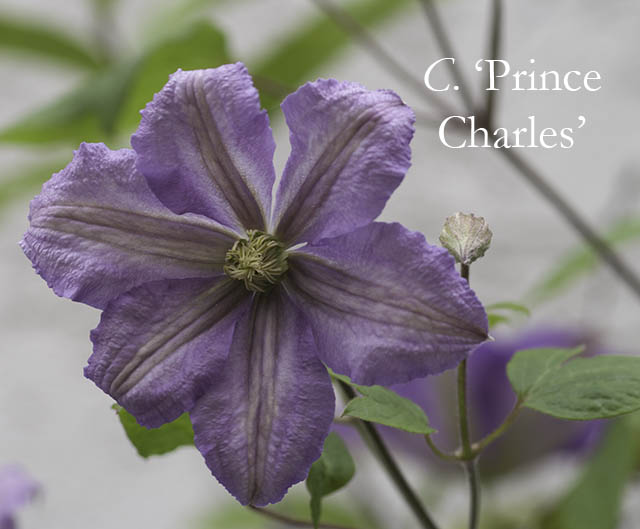In a previous article, “Name That Tag: ???”, I wrote about why you might want to make labels for your favorite garden plants. There are quite an assortment of ready-made tags and labels available in several shapes and sizes as well as ones made out of metal, aluminum, copper or plastic. There are even top of the line custom engraved ones like you would find at arboretums. If you are imaginative, you can make your own DIY markers from countless household items ranging from such things as popsicle sticks, wooden paint stirrers, frozen orange juice lids, to even painting plant names on small rocks. I even ran across a creative technique that utilized an old fork topped with a wine cork emblazoned with the plant’s ID.
When I decided to start labeling my clematis at the castle I knew I wanted the labels to look consistent, be long lasting and unobtrusive while at the same time easy to use and find. In the beginning I used hanging copper tags on which you would engrave the name with a ballpoint pen. They were attractive and could stand the test of time, but the problem for me was that at times, when I needed them, I couldn’t easily locate these tiny tags (which measured a mere ¾” x 3¾”) and occasionally I’d lose them after I pruned my plants.
Then, in Spring of 2000, I found the perfect labels for my clematis collection. They are the zinc “rose nameplates” manufactured by Paw Paw Everlast. They fulfilled my objective because not only are they economical when you buy them in bulk (they range between 28¢ to 38¢ per marker), they don’t stick out like a sore thumb in the garden. I chose the 1¼” x 3½” nameplate because I like the simplicity of only showing the clematis’ name. Other data pertinent to the plant that one might want to include on a tag I just keep in notes on my computer. If you prefer adding more info than just the name, this company produces several different sizes and shapes, so you can chose a different size to accommodate your personal needs. In my garden I like to place the markers at the base of the plant, close to the ground, usually where it is still slightly visible.
In 2004 I was contacted by one of our ACS members, Sarah Crane, who recommended that I try using the Brother P-Touch Electronic Labeling System for marking the names on my labels. She suggested using the Black On Clear Laminated Tape to print the names. Since my handwriting is not one of my strong suits, I was beyond ecstatic about her suggestion. Another plus that Sarah pointed out about using this method is the longevity of the labels. At that time she had some of her labels out in her garden for four years and counting.
Then, in 2010, Brother Label Makers came out with its new P-touch 2430 Labeling System (http://www.amazon.com/gp/product/B001IKKIVW/ref=as_li_tf_tl?ie=UTF8&camp=1789&creative=9325&creativeASIN=B001IKKIVW&linkCode=as2&tag=clematiscom0a-20) which plugs it into your computer when you need to make tags and unplug when you are finished. Since I was tired of using the old “hunt and peck” method of typing on the tiny key pad that was located on my battery-powered version, I couldn’t wait to use this upgraded model. It was perfect for me when making tags with challenging names such as: Blekitny Aniol, Matka Siedliska and Sizaja Ptitsia, etc. All I needed to do was copy and paste the plant names from my word processing program into the P-touch editor text area and then print out the labels. It has been so nice not to have to worry about making typos anymore! Like Sarah, I have found that these laminated labels have never faded and last forever (okay, so far it has been at least 8 years).
So there you have it, the Clematis Queen’s tagging technique on making her garden markers utilizing zinc nameplates and labels that are durable, long-lasting and are easily readable. Best of all, they don’t detract from the joy and beauty my cherished plants, i.e. my clematis, bestow upon me.
